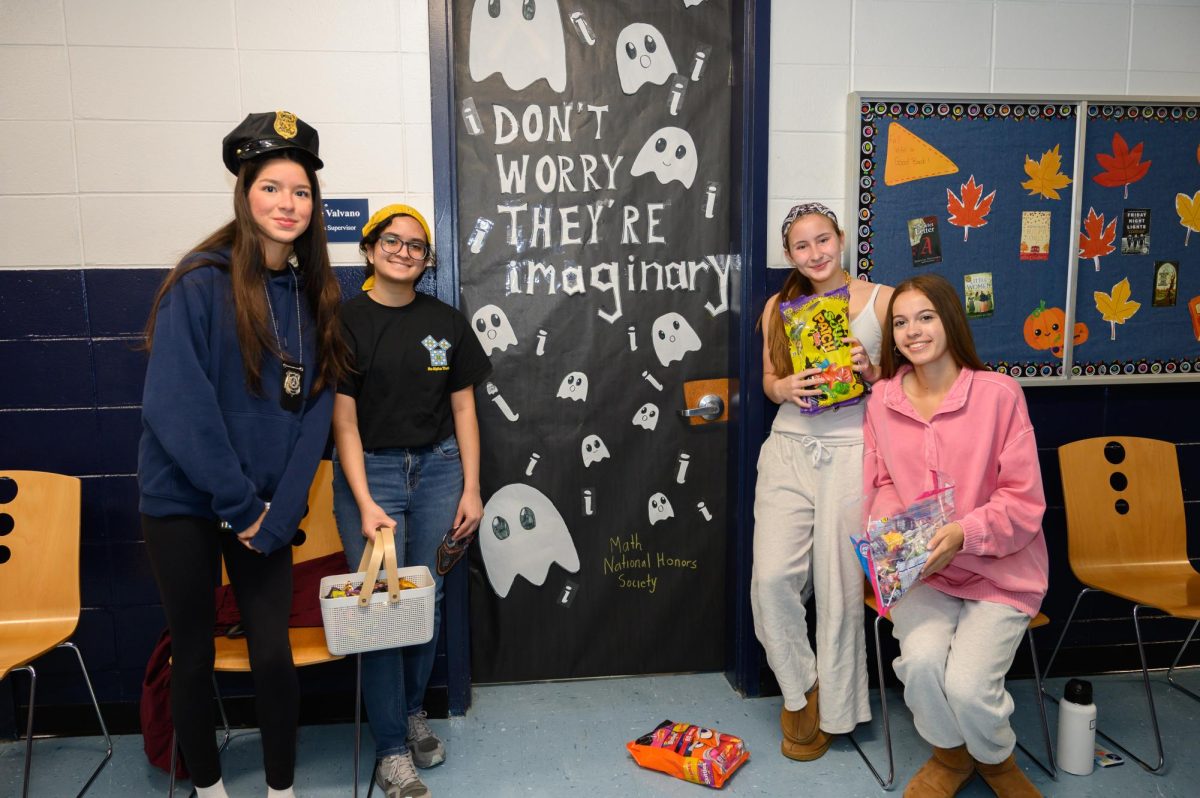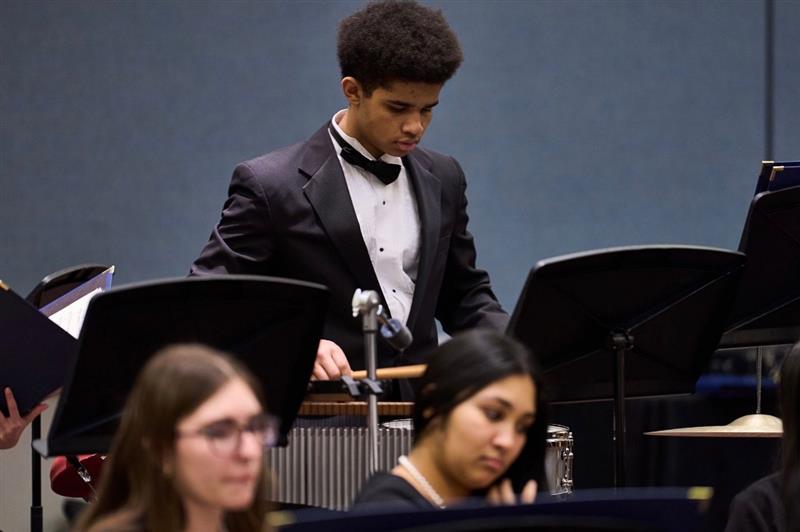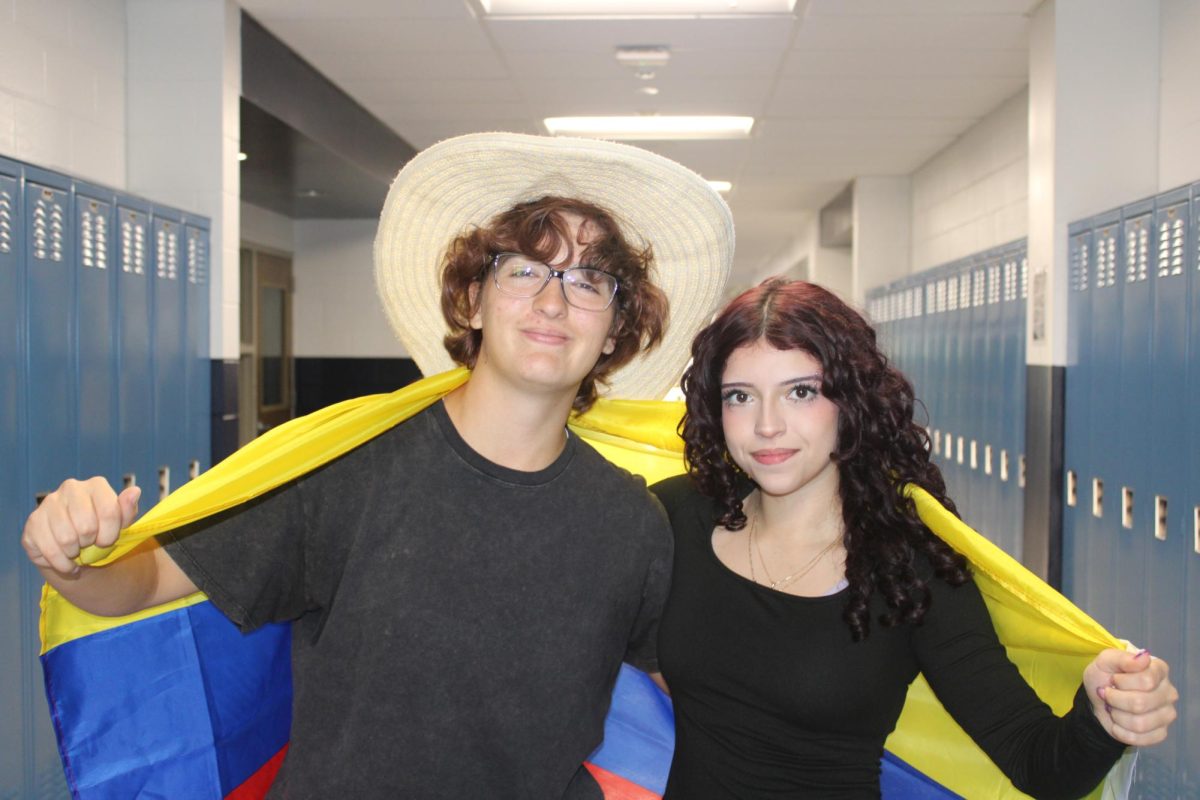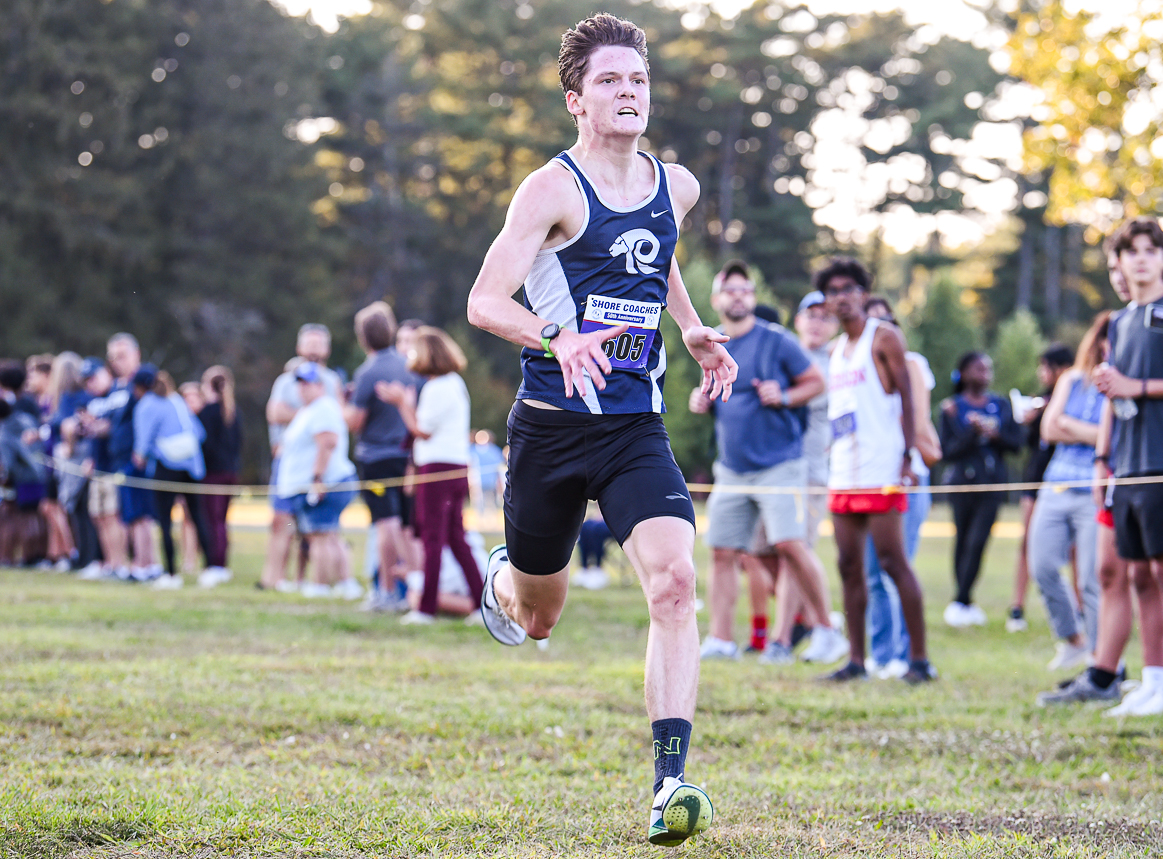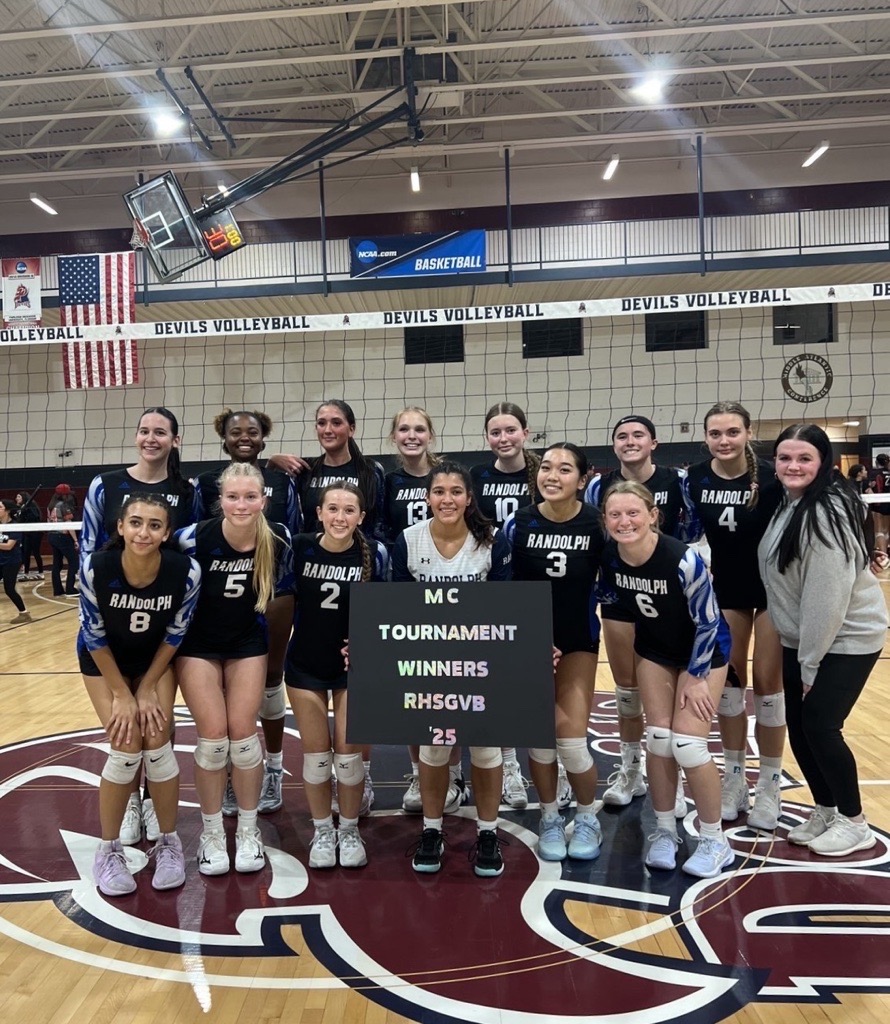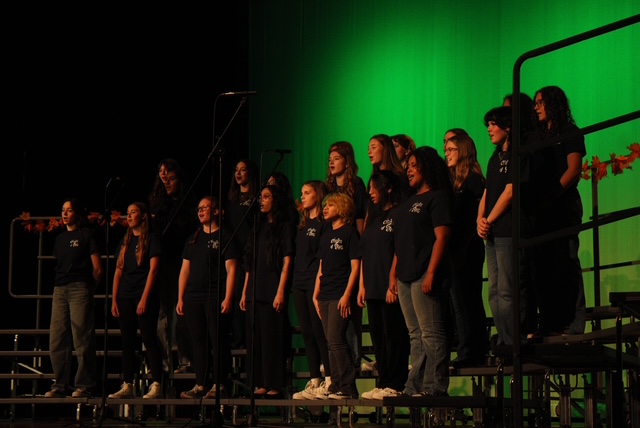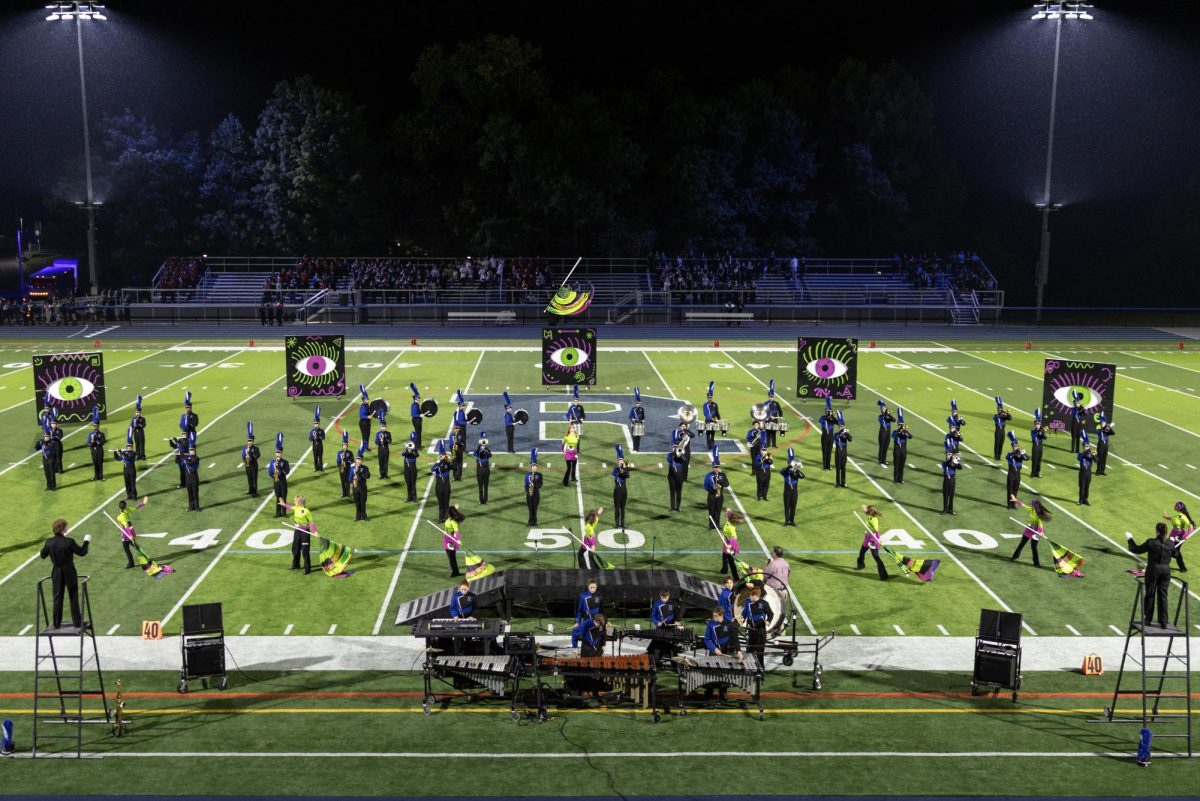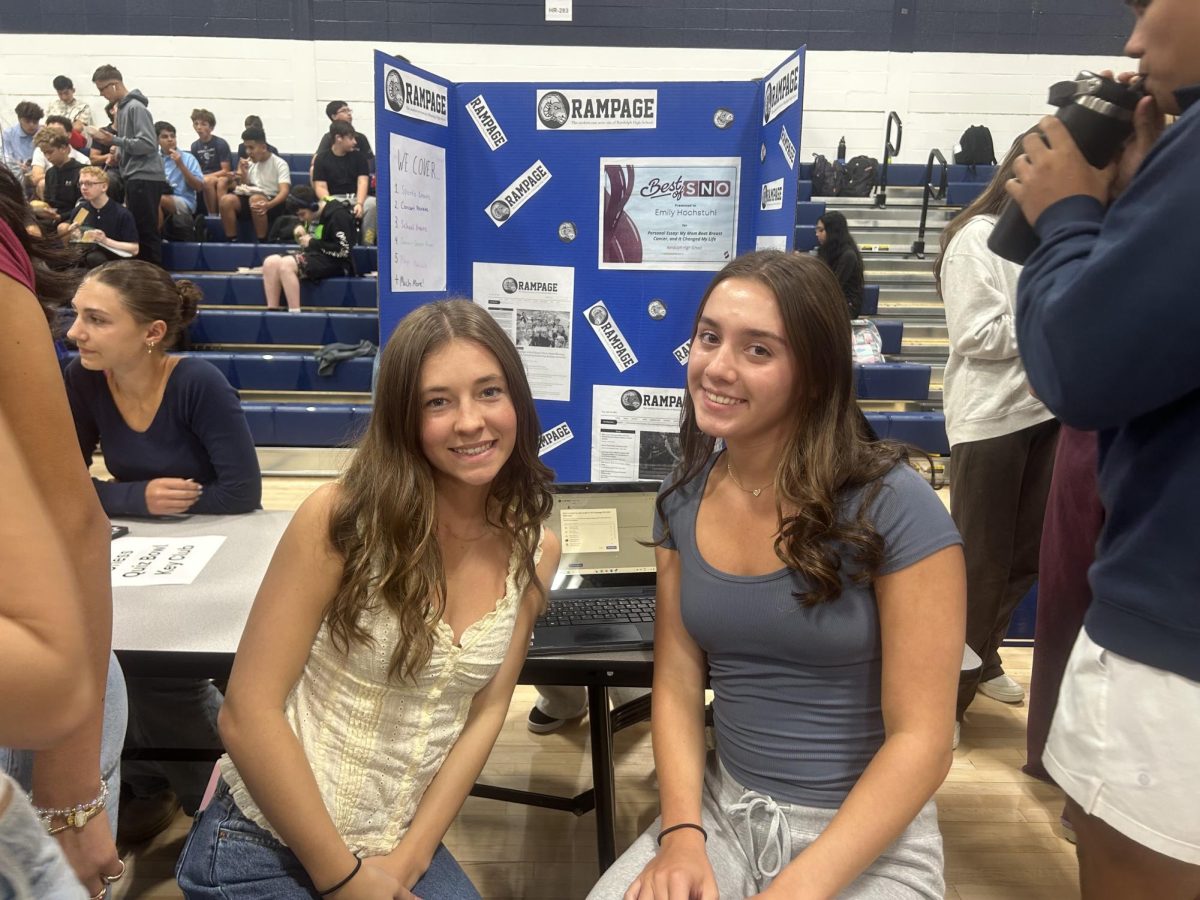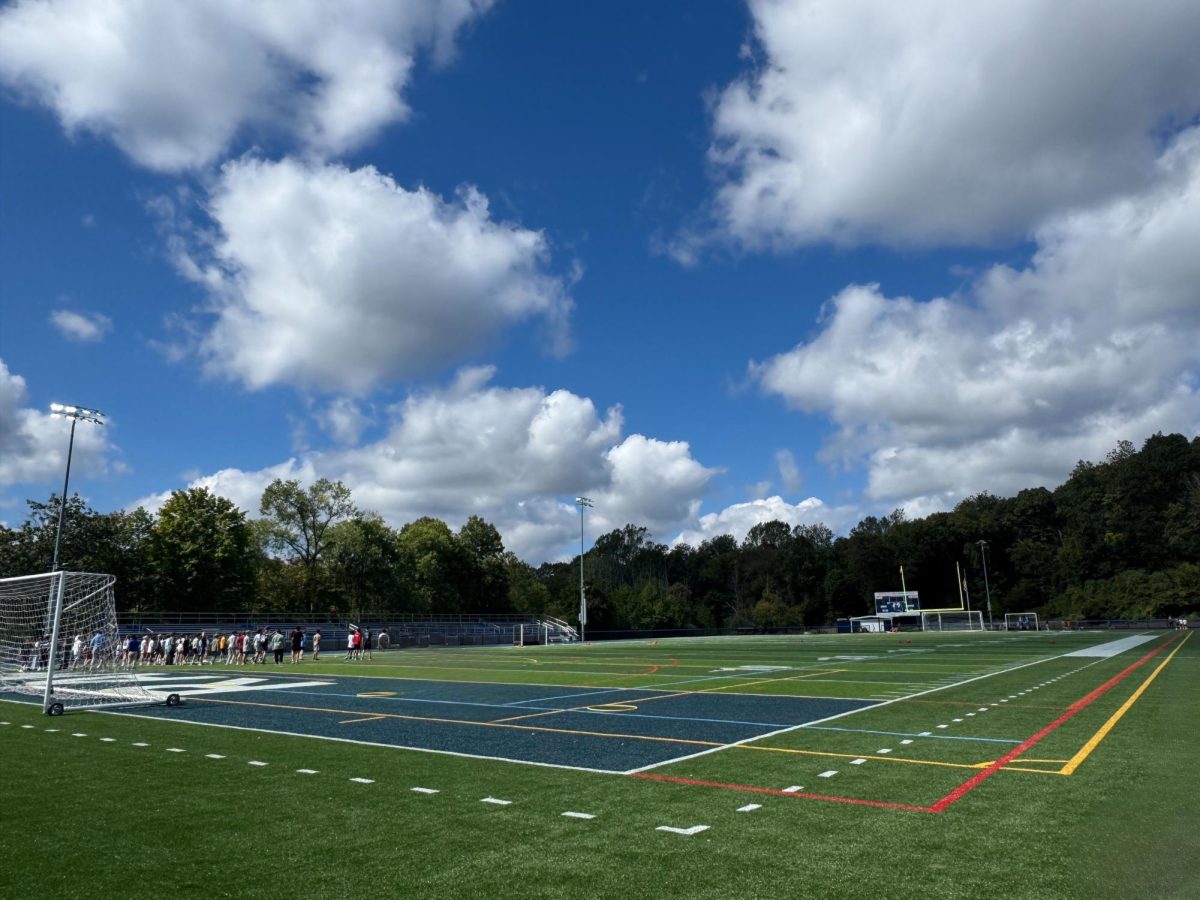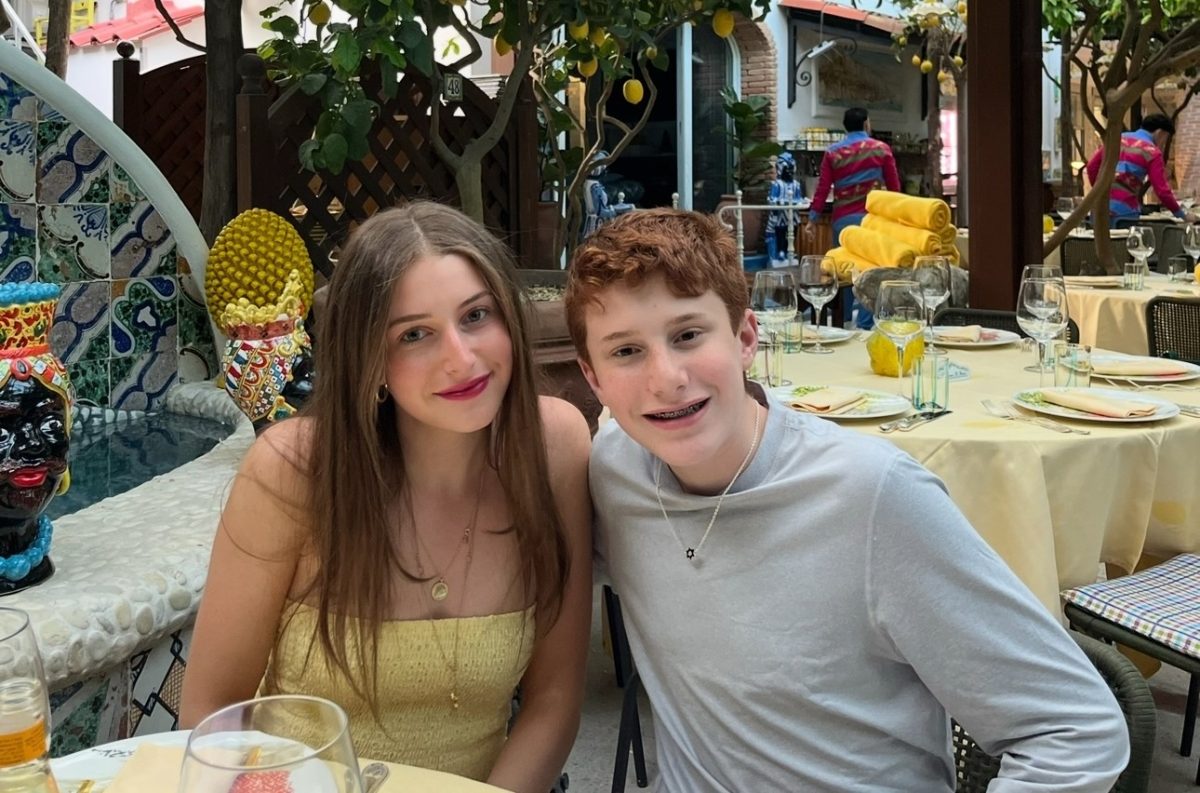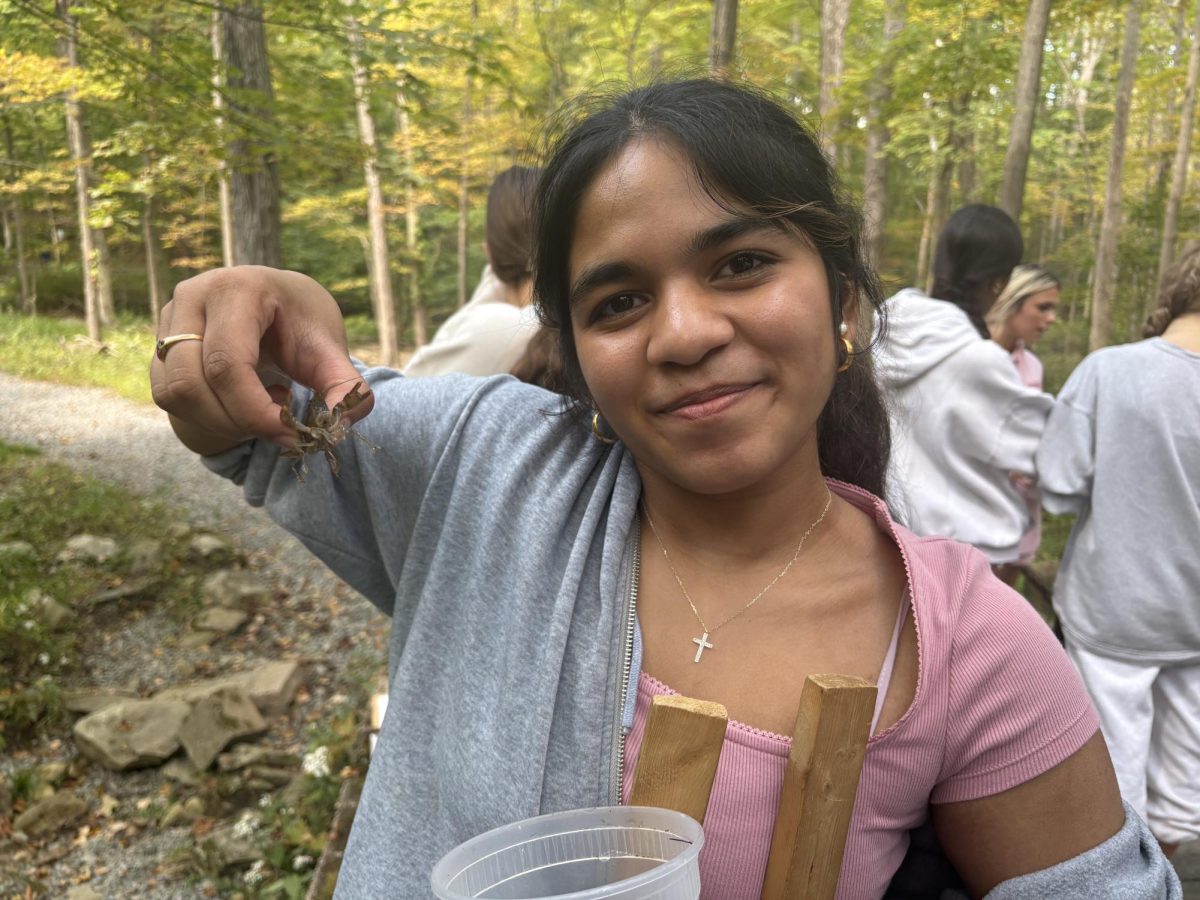AP Environmental Science (APES) students from RHS studied organisms in local streams during a class walk through the Randolph Trails near campus on Monday, Sept.15. The activity included measuring local water quality to emphasize the importance of ecological awareness and value of experiential learning.
Science Teacher Krista Seanor has led the annual walk for the past 10 years. “It’s an engaging way for students to connect with the environment,” she said. “The point of the walk was to evaluate the types of benthic macroinvertebrates found in our local streams. The presence of various macroinvertebrates can be used to determine the water quality.”
About half a mile into the trail, students stopped at a bridge overlooking a small creek. Using magnifying lenses and identification charts, they examined the organisms they collected. The results revealed a wide variety of life, including species not commonly recognized by students.
“We got to see and collect a ton of different invertebrates,” sophomore Sarah Samtackamy said. “Although it was kind of gross, it was a great interactive experience in nature, and we all had lots of fun trying to catch crayfish.”
Along with collecting organisms, students determined the overall water quality of the streams. The results did not disappoint, as students determined that Randolph had only minimally polluted water. Their findings supported this, as some species, like crayfish, would not be able to survive in polluted conditions.
“I liked this activity because it was an exciting and interesting break from typical learning,” sophomore Anthony Golda noted. “We got to see many interesting organisms and learn about ecosystems right in our town.”

